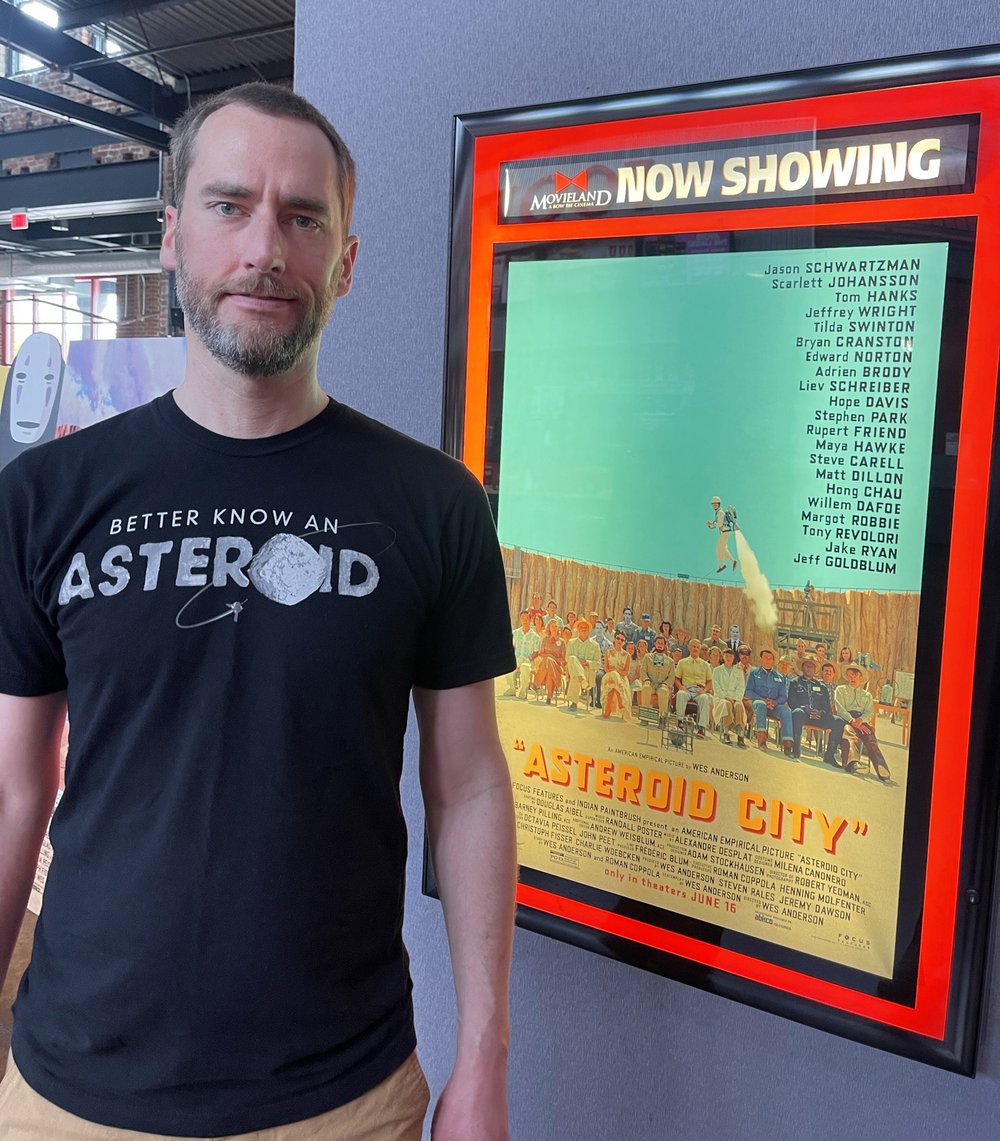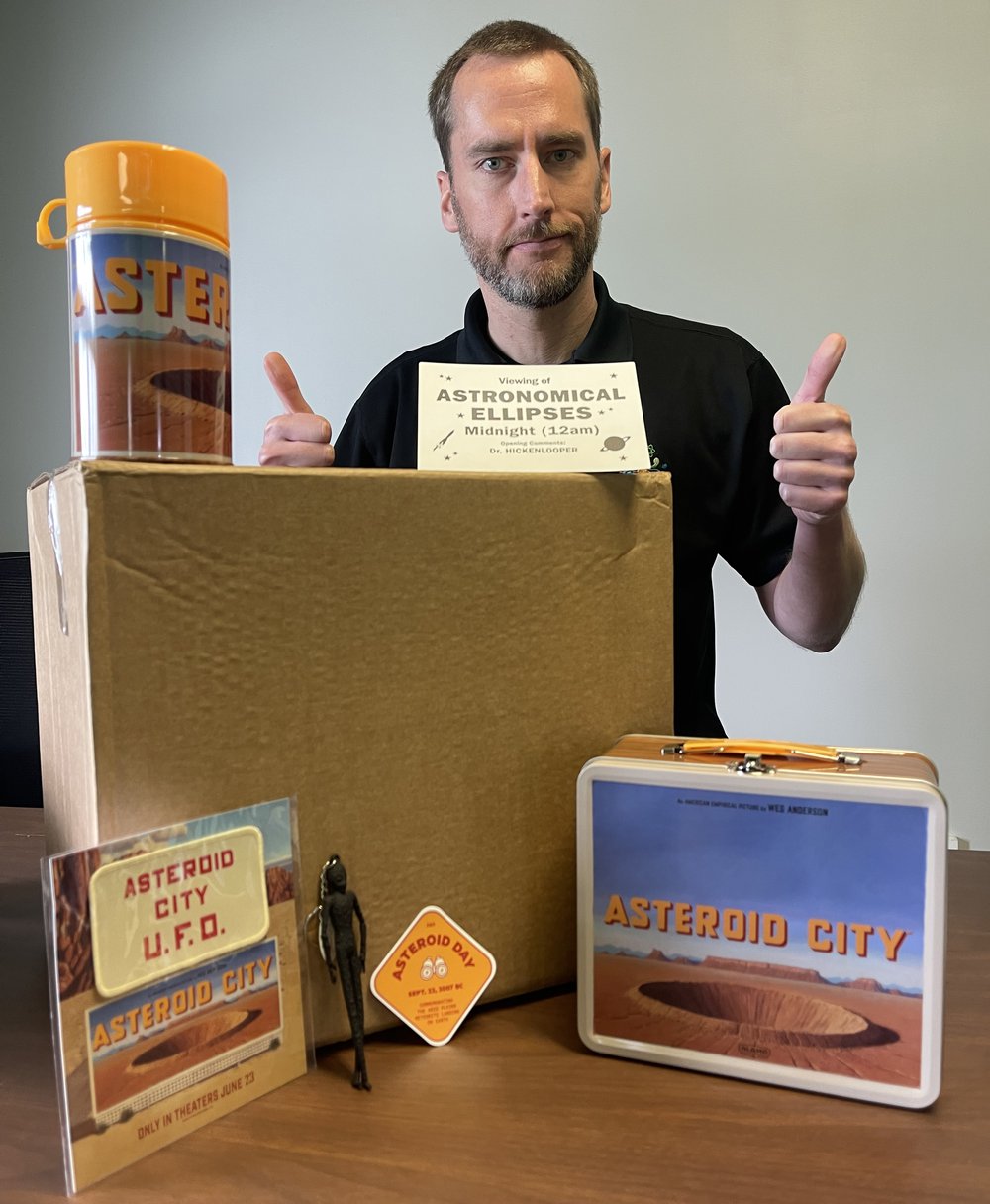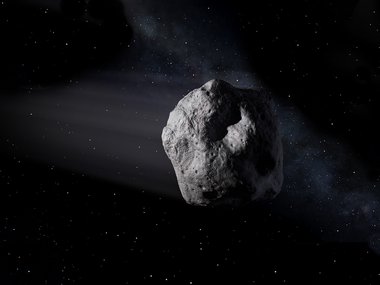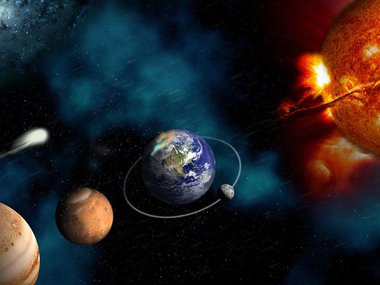Celebrating Asteroid Day with a Cosmic Journey ... to the Theater
As an astronomer and dedicated fan of asteroids, I couldn’t pass up the opportunity to watch Wes Anderson’s latest film “Asteroid City” because my favorite variety of space rock was bound to make an appearance. As the story unfolded on the screen, I was reminded of ways asteroids can be encountered in the real world.

Mild spoilers ahead. “Asteroid City” hit theaters June 23, 2023 and is rated PG-13. Younger stargazers and space cadets will need to consult a parent or guardian before watching.
Most of the events in the movie take place in a small American desert town called Asteroid City, the name arising from its proximity to a 5,000-year-old impact crater. As a starting point, this is an excellent bit of science. The dry conditions of a desert are great for preserving features like craters because lack of rain limits erosion. One of the best-preserved craters on Earth, Meteor Crater (sometimes called Barringer Crater), is located in the American southwest and is 10 times older than the crater depicted in the movie!
To commemorate the anniversary of the Asteroid City impact in the film, the town celebrates a holiday called Asteroid Day on September 23. This is another direct connection to reality, where the UN-sanctioned Asteroid Day is observed each year on June 30. The date for our Asteroid Day was chosen to mark the anniversary of the Tunguska Event, a still somewhat mysterious explosion that occurred on that day in 1908. Although the presumed impact didn’t leave a crater behind, the general consensus is that an asteroid or comet entered Earth’s atmosphere and broke apart above the ground in an event called an airburst. We’re a bit lucky that the Tunguska Event took place over Siberia because the explosion would have done significant damage to a heavily populated area. Such an encounter with an asteroid in the relatively recent past is a good reminder to keep a close eye on our cosmic surroundings so that we have the best-possible chance of averting future disaster.

Preventing an asteroid impact may sound like science fiction, but creative scientists are already working on a few techniques that may eventually save the day. In “Asteroid City,” several of the younger characters are also creative scientists, and they’ve traveled to the Asteroid Day ceremony to be given awards for their over-the-top science projects. Each award is named after an astronomical object, and in a surprise twist, this sort of thing sometimes goes the opposite direction in reality.
Over the last two decades, astronomers at the Massachusetts Institute of Technology have helped name thousands of astronomical objects after science fair winners! Astronomers who discover asteroids are granted naming rights to those space rocks by the International Astronomical Union. As advanced, partially automated searches have overtaken lone astronomers in the search for new objects, many thousands of nameless asteroids have been added to our catalog of the solar system. For any junior stargazers reading this, with a bit of scientific ingenuity, you can win the honor of having an asteroid named in your honor, too!
Instead of debunking the depiction of the alien visit in “Asteroid City,” I’ll use my remaining words to offer a few brief comments on other scenes:
- The surviving fragment of the impactor that created the crater is repeatedly referred to as an “asteroid” when, in fact, the rock would be called a meteorite after it hit the ground. One character offers a correction during the movie, but it’s not picked up by the others.
- The cataloging of meteorites receives a mention in the movie, and this is a real activity of scientists. Drawing from a number of sources, the Meteoritical Society has assembled a list of nearly 72,000 rocks from outer space. Click here to browse the full catalog of known meteorites, or here for a list of meteorites discovered in Virginia.
- Two characters are seen using a telescope during the day—with no obvious signs of a filter installed. Because the Sun’s light overpowers nearly everything else in the sky during daytime, this is an unusual activity for the stargazers to attempt. If they had fitted the telescope with a solar filter, they could conceivably be observing the Sun.
- One of the award-winning science projects involves projecting an image onto the Moon, an image so large and bright that it could be seen with the unaided eye from Earth. This is a monumental challenge! A beam of light from a typical projector would spread out far too much over the quarter-million-mile journey to the Moon, resulting in an image too large and faint to be seen. The best change we’d have to achieve this is a laser. Lasers are regularly fired toward the Moon, and we can measure the reflection thanks to mirrors left behind by the Apollo astronauts. Unfortunately, the return is meager—the amount of light received back on Earth is counted as individual photons. Even if the Moon can’t serve as a functional billboard, it’s not stopping various marketing agencies from trying to put advertisements into the sky.
- Finally, in a pivotal scene, “Asteroid City” characters are gathered to view a nighttime astronomical event through apparently handmade devices meant to block most of the light in an attempt to protect their eyes. Safety is always important, but it’s rarely of such concern for nighttime events. In fact, at night you’re much more likely to need binoculars or a telescope to gather more light than your eyes can on their own. The protective shields used in the movie appear to be designs that might work better for a solar eclipse.
Despite the fact that studying asteroids has broad support among the American public, “Asteroid City” isn’t really a movie about asteroids. Off-world visitors and the pursuit of science factor prominently in the movie, but they play supporting roles that drive a larger exploration of how we react to change, grief and new opportunities for connection. The added flair from the astronomical setting make this an excellent pick for Wes Anderson fans and adventurous moviegoers looking for Asteroid Day entertainment.
P. S. If you’re looking for more stellar entertainment options and have never seen a meteorite before, the Science Museum has not one, but two on display this summer: one in the Space: An Out-of-Gravity Experience touring exhibition and one in the Speed exhibition. The latter you can even touch. Getting that close to an other-worldly object is sure to make an impact!


